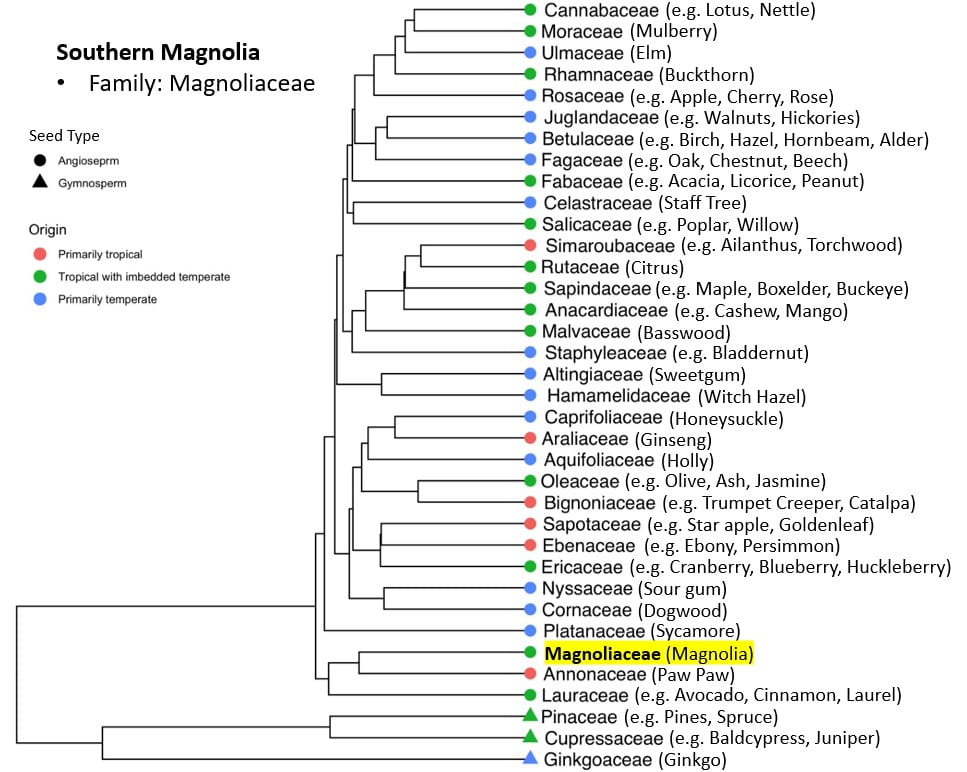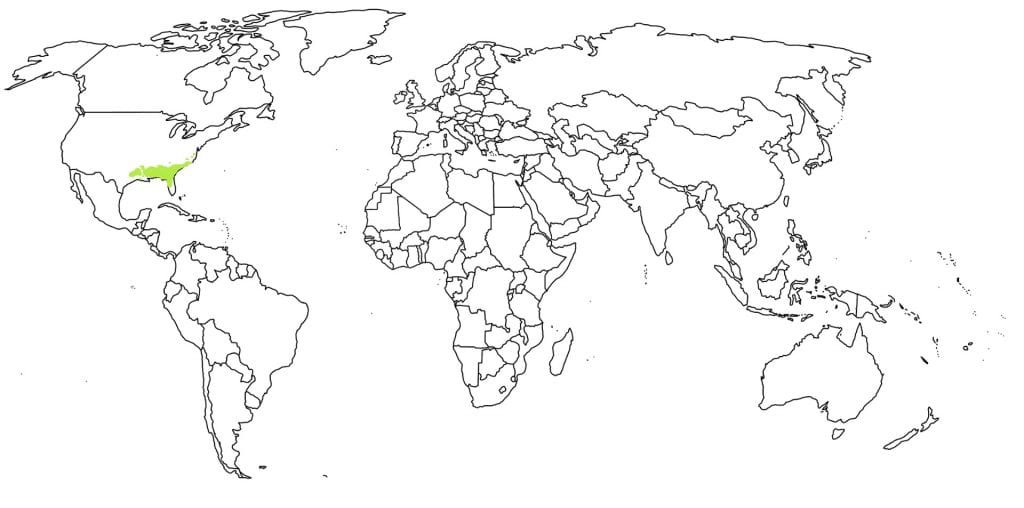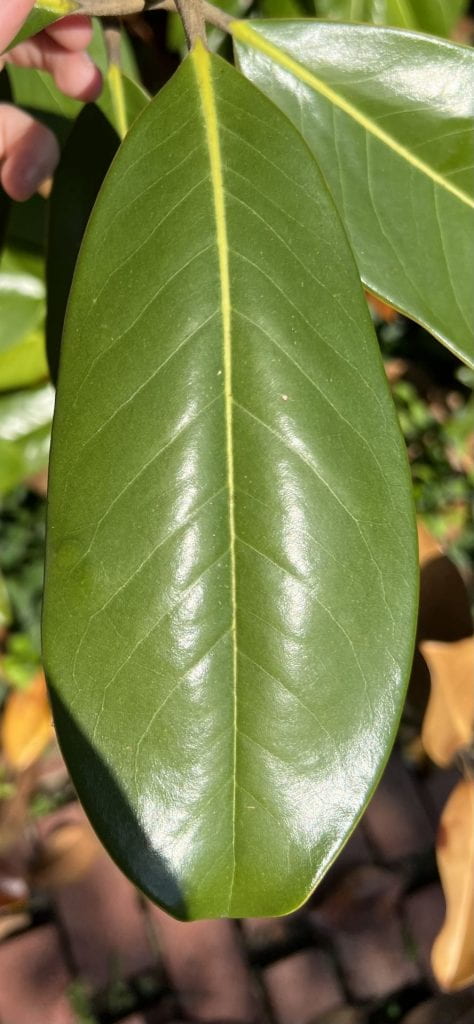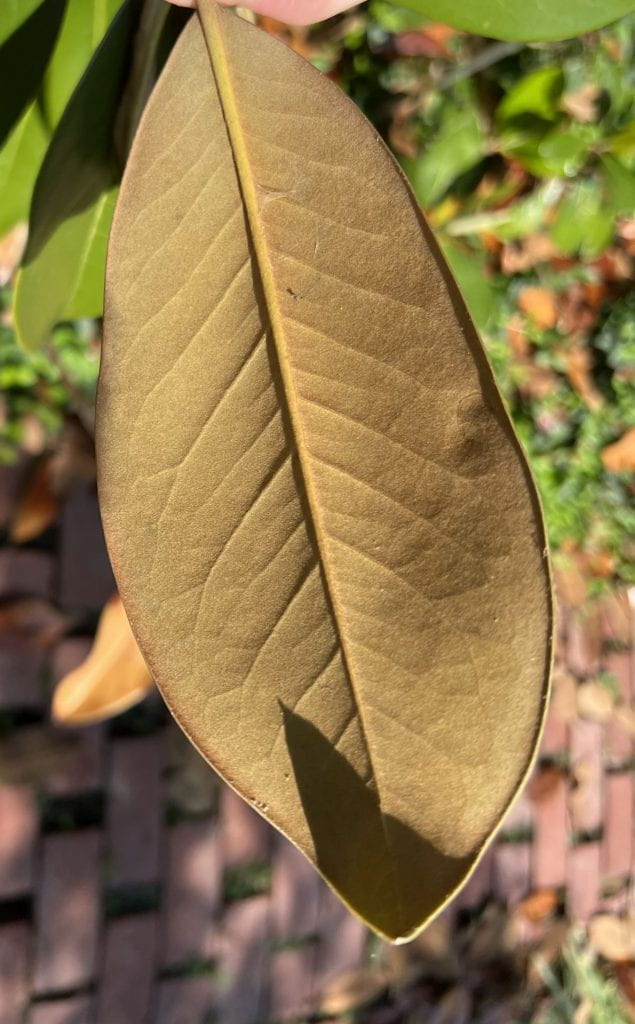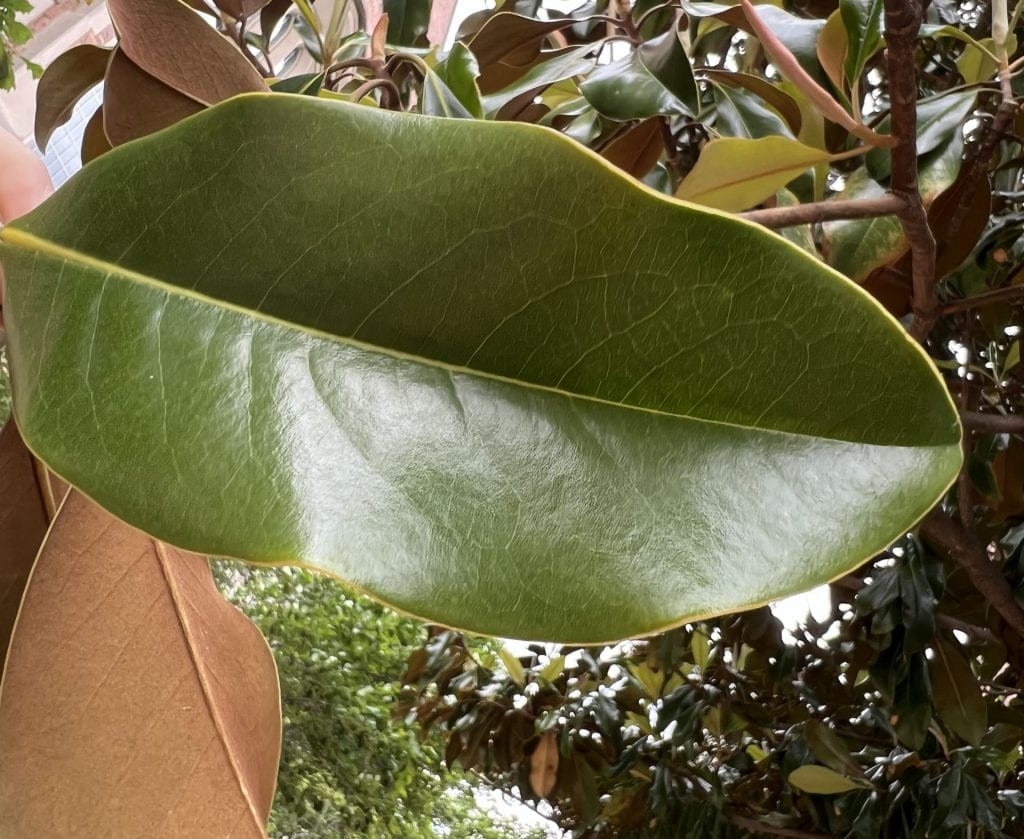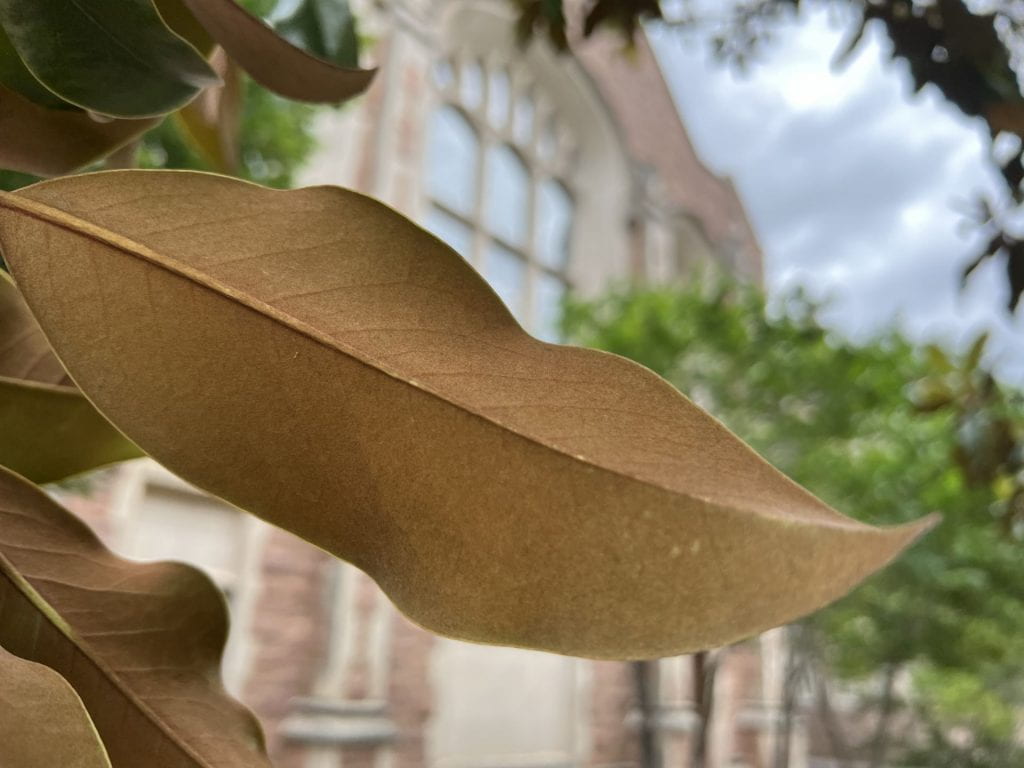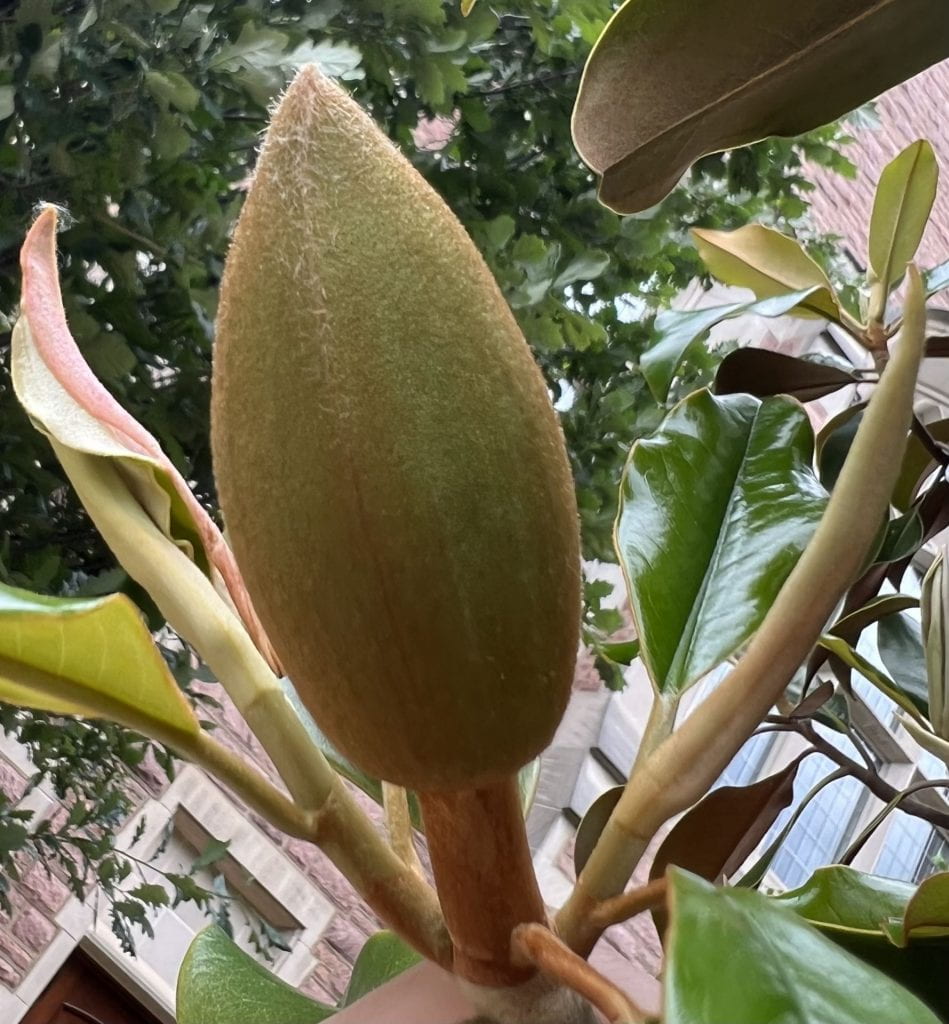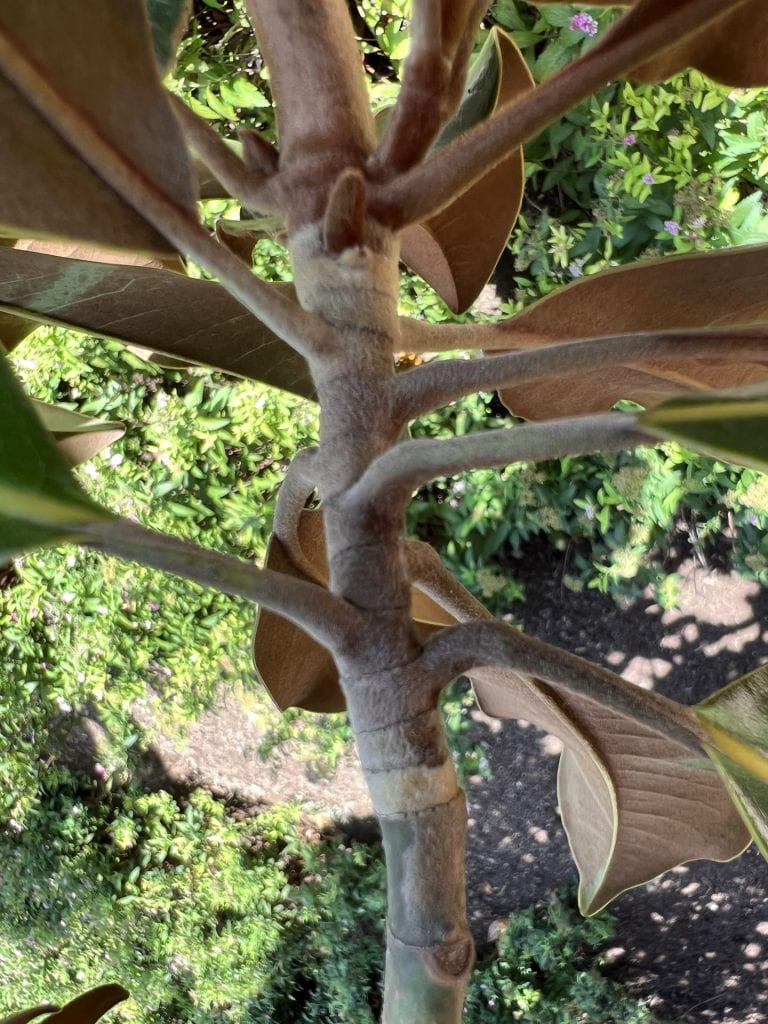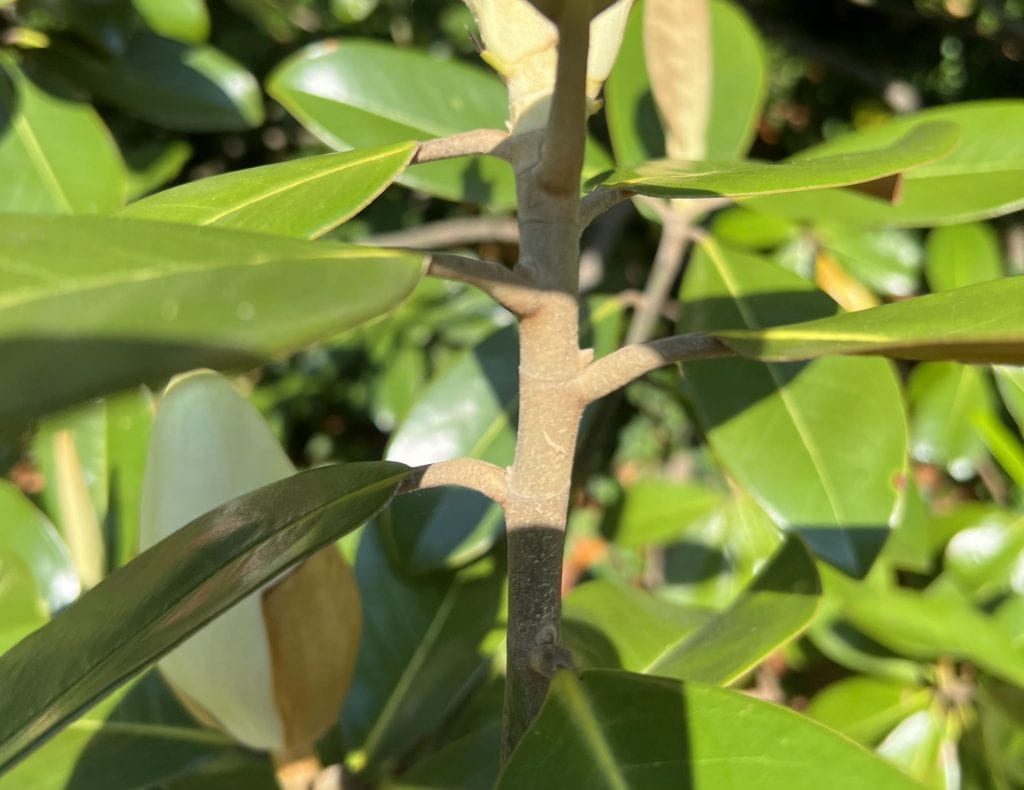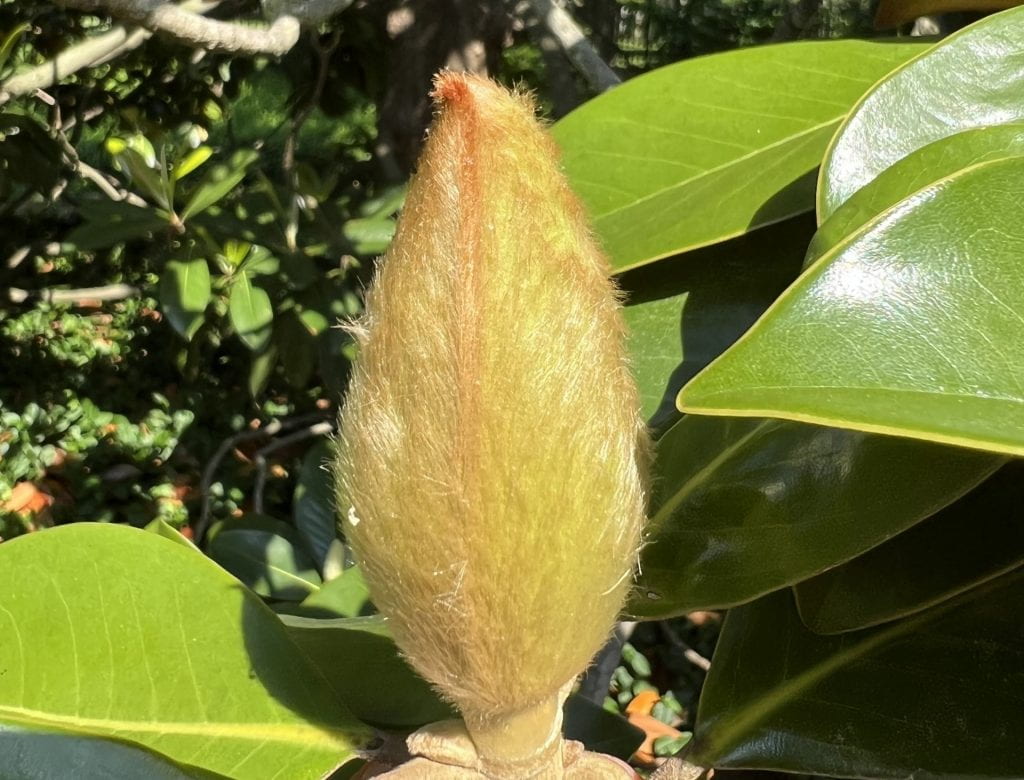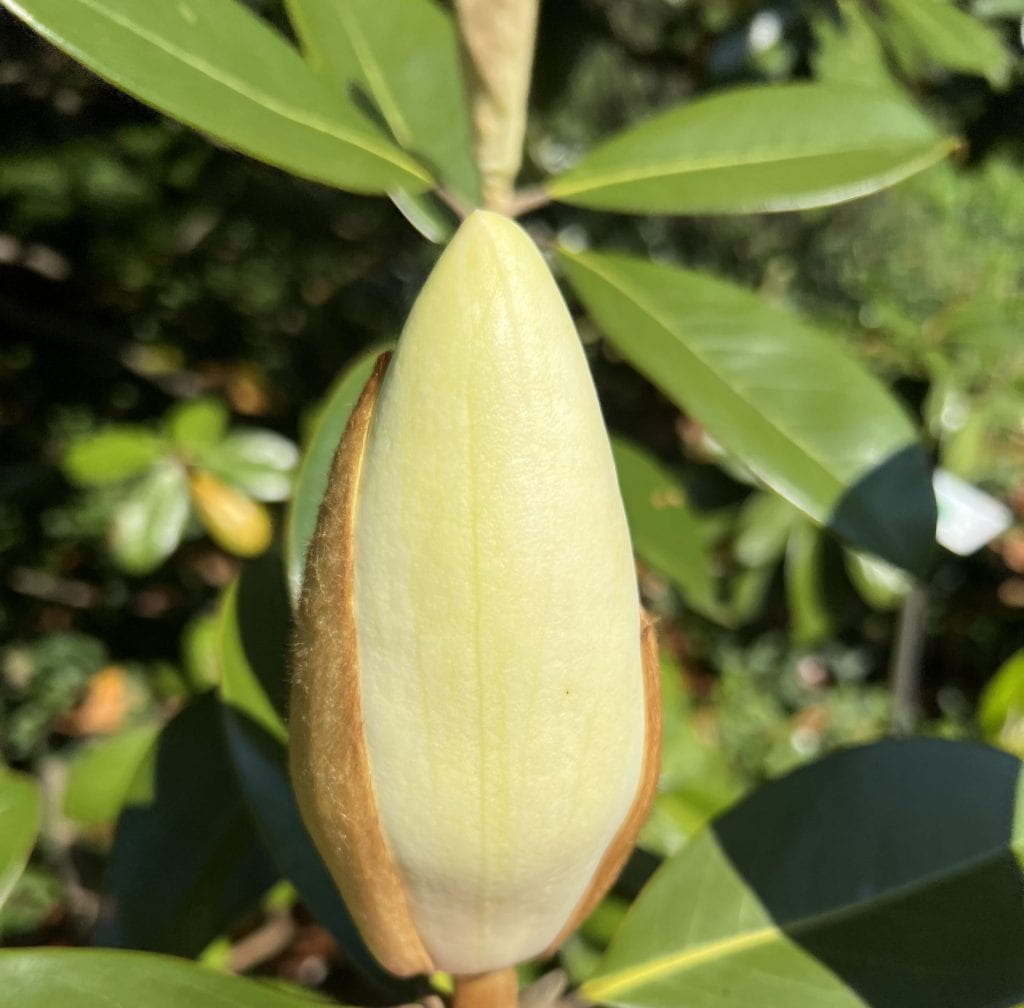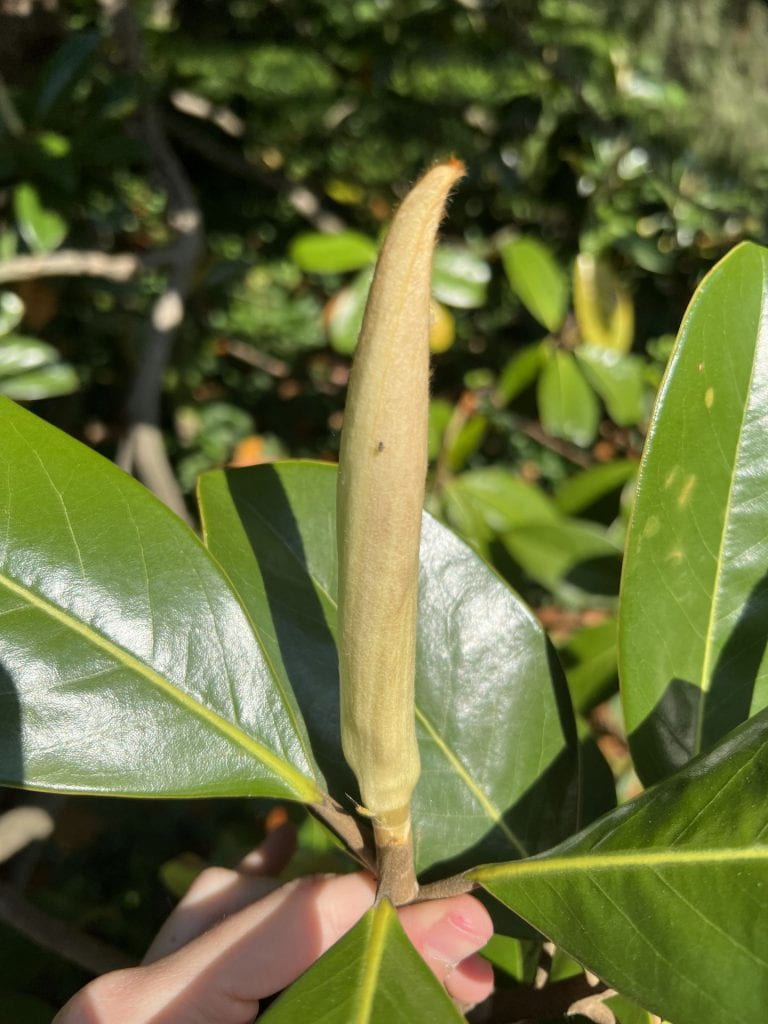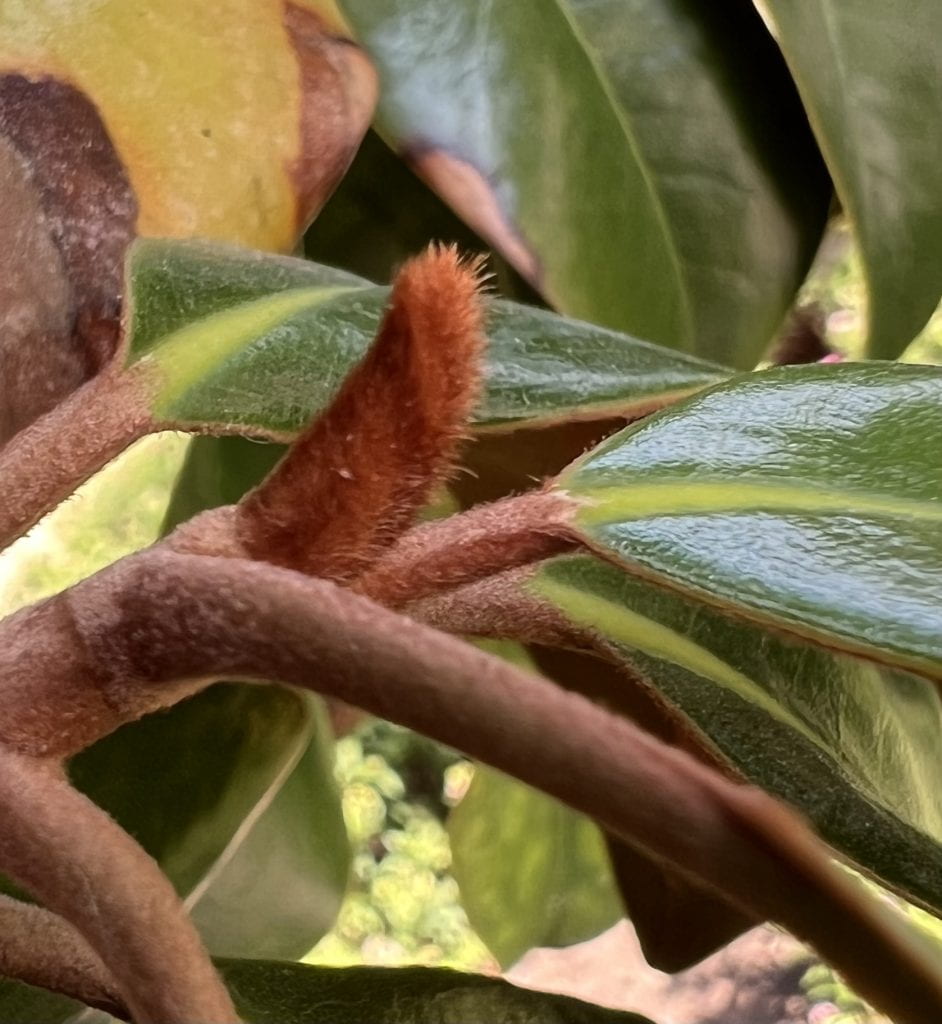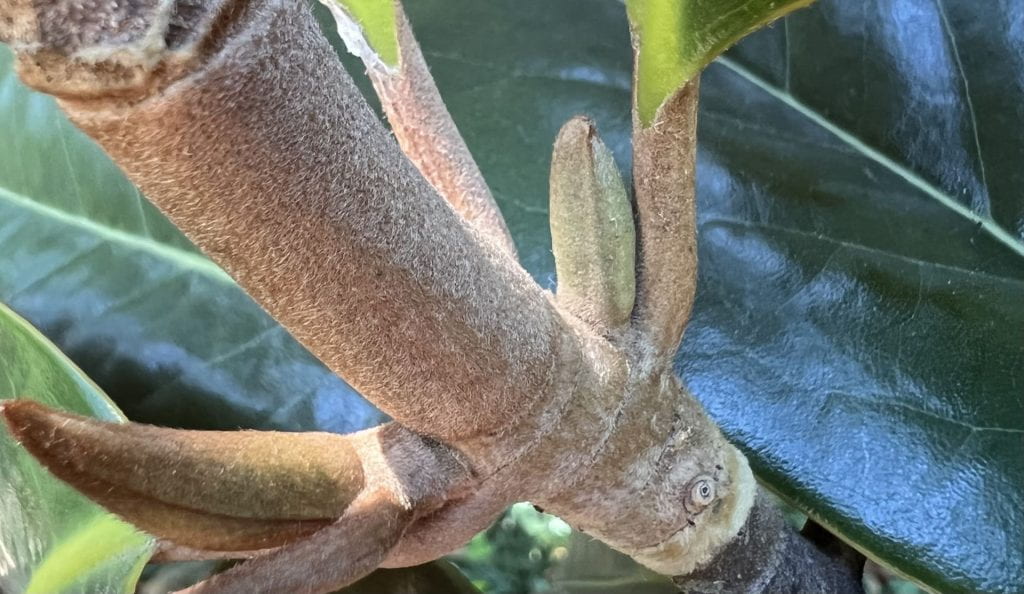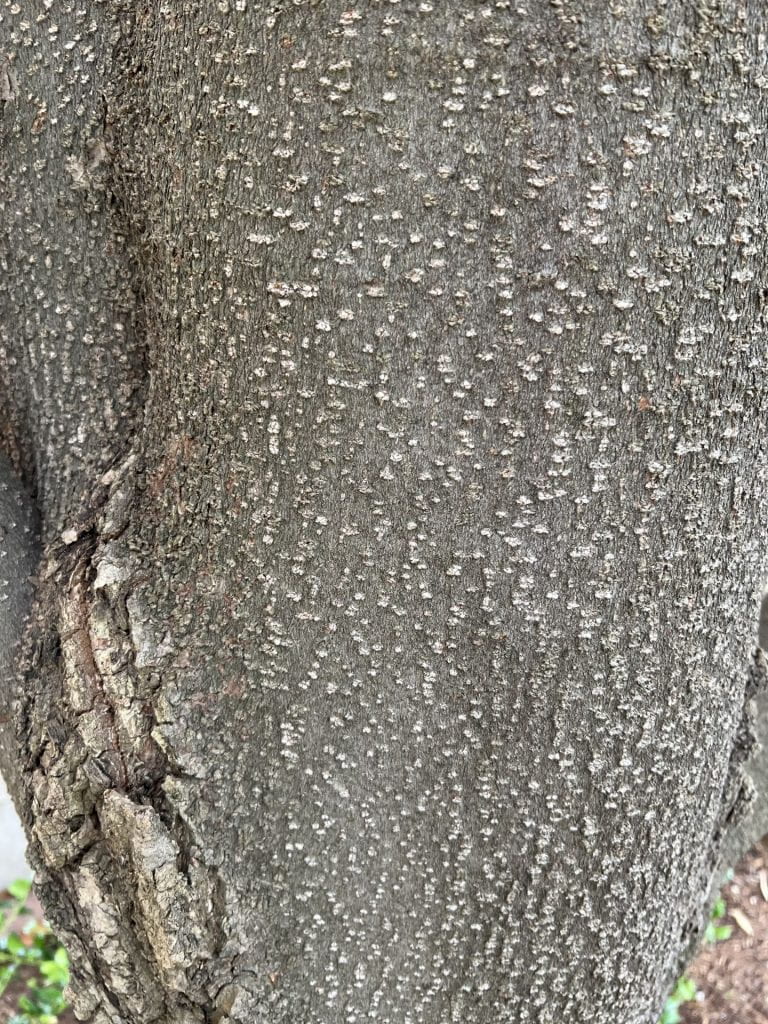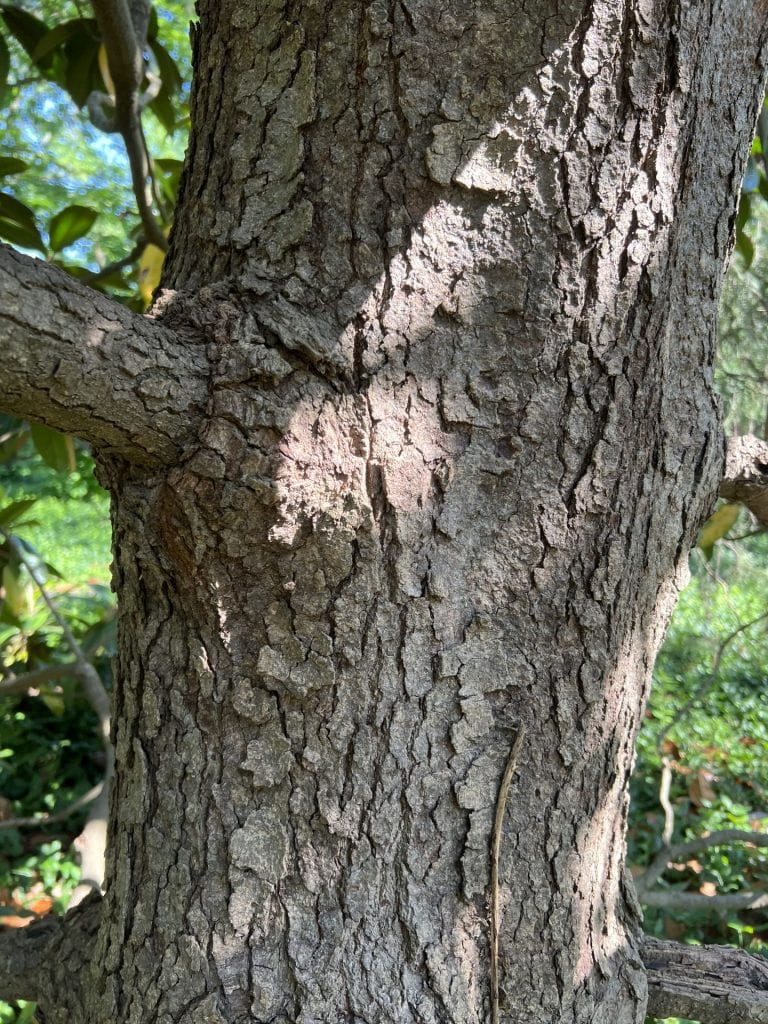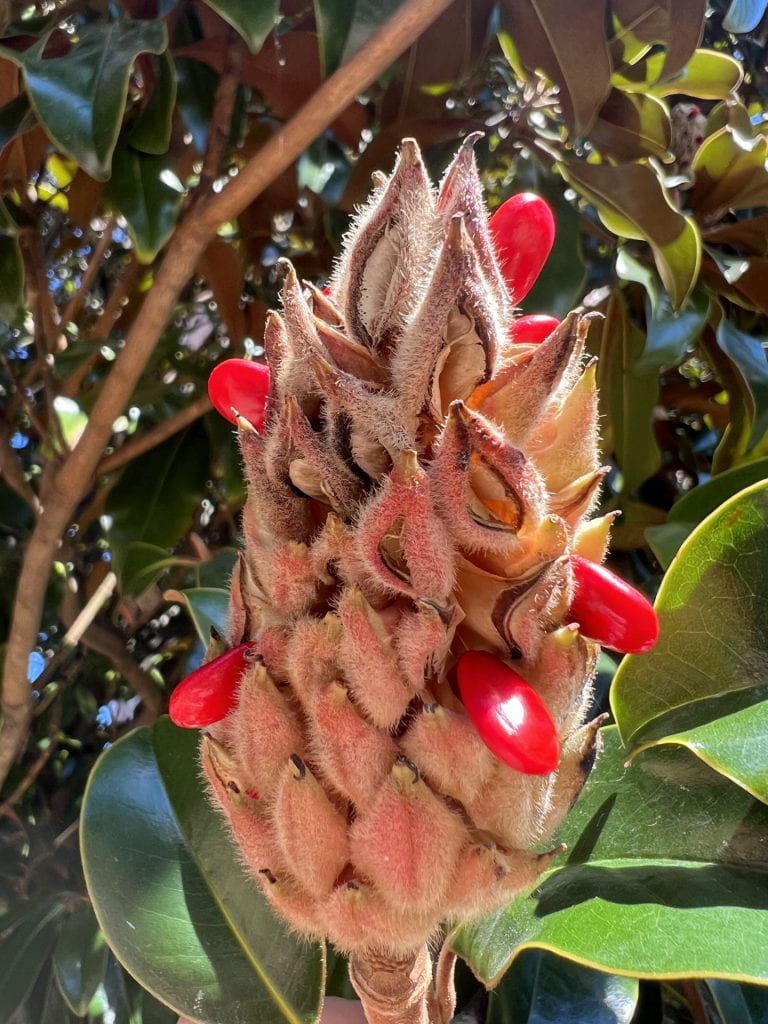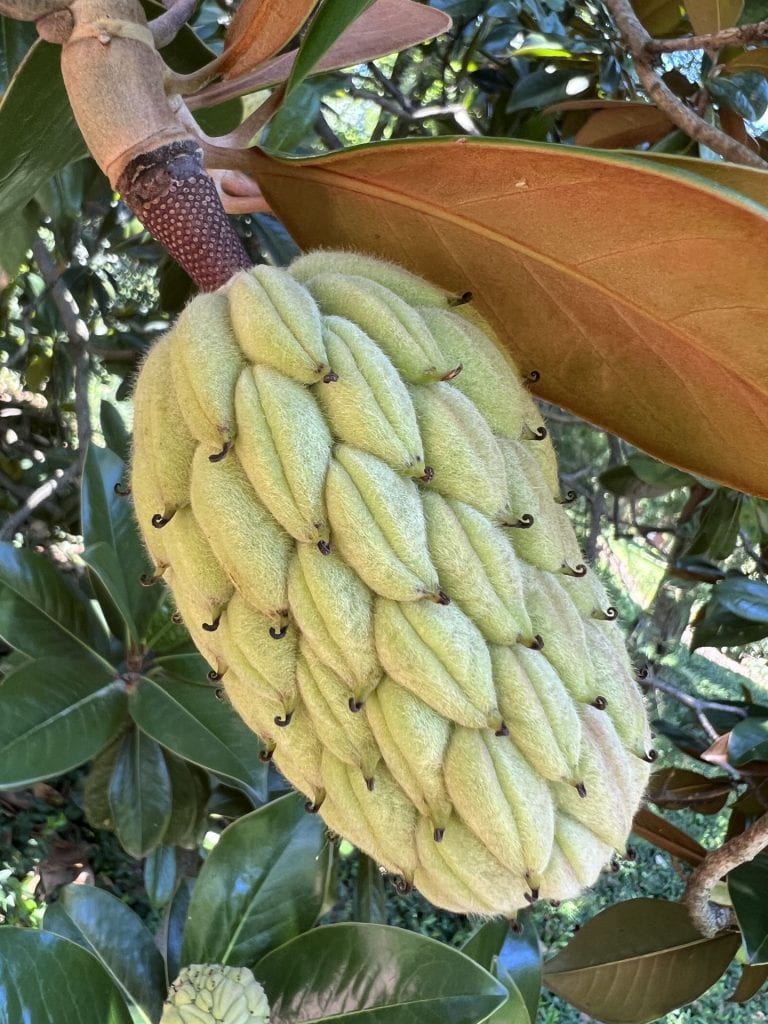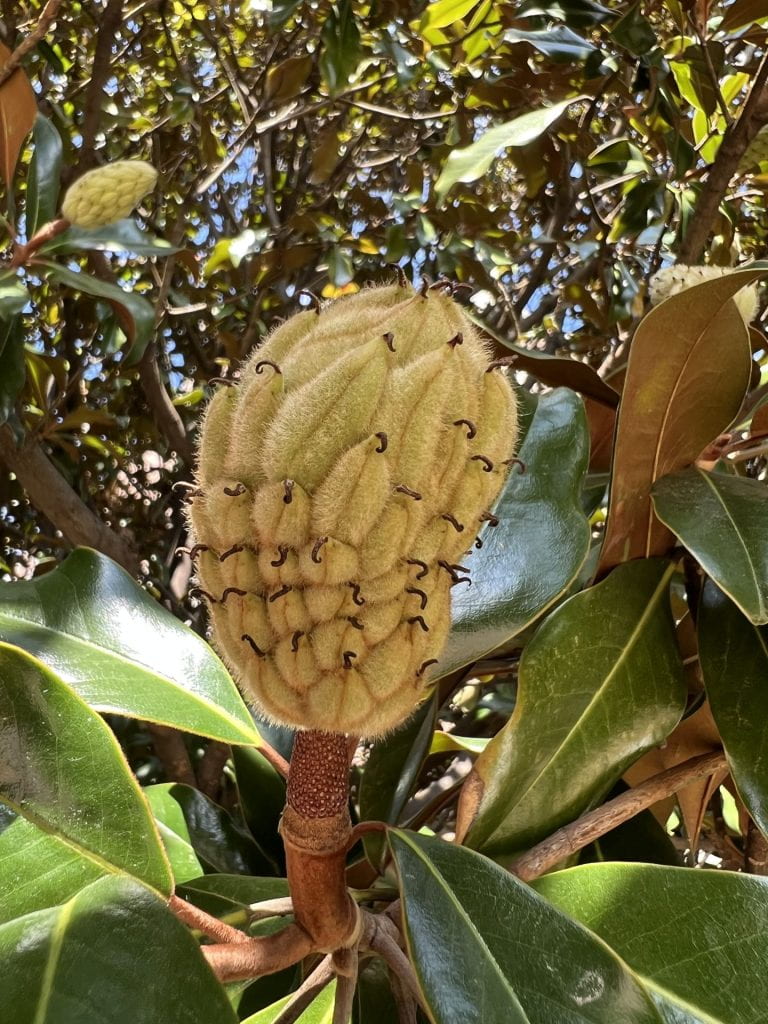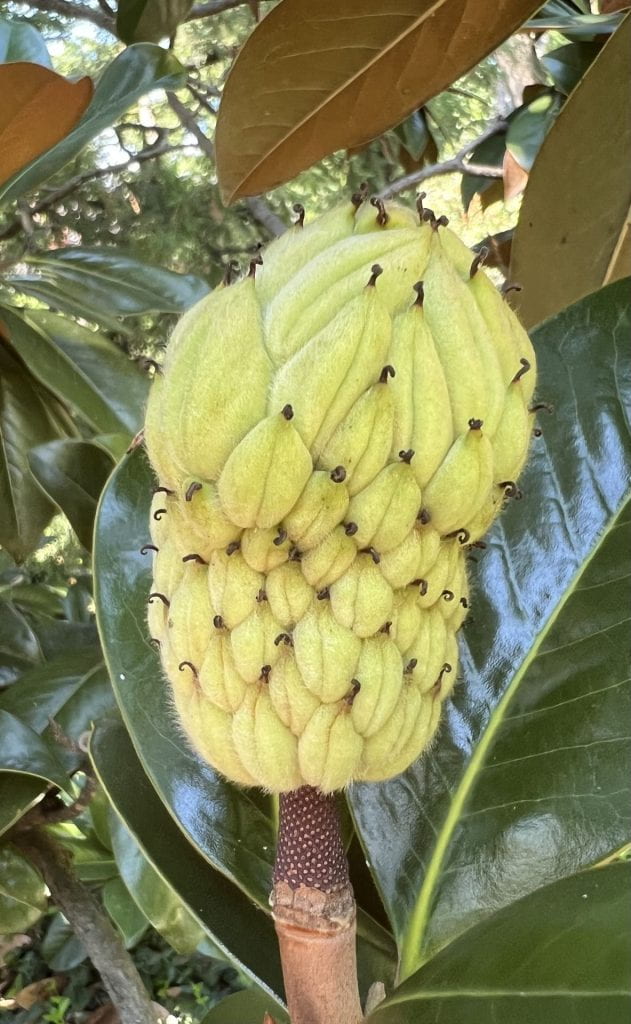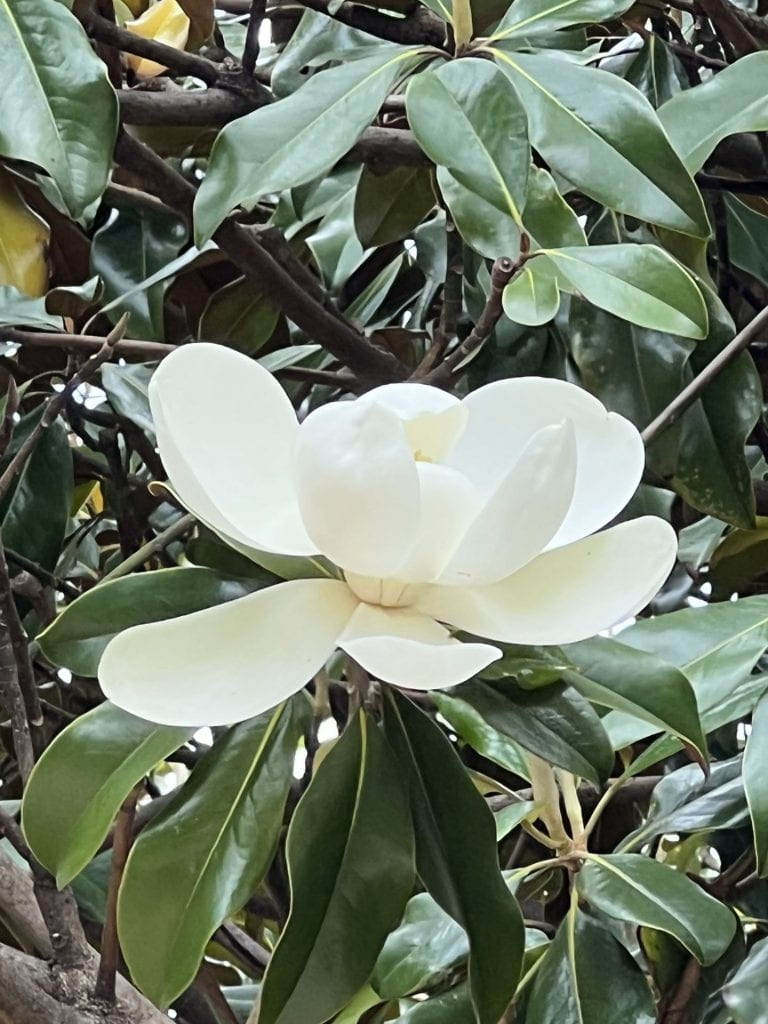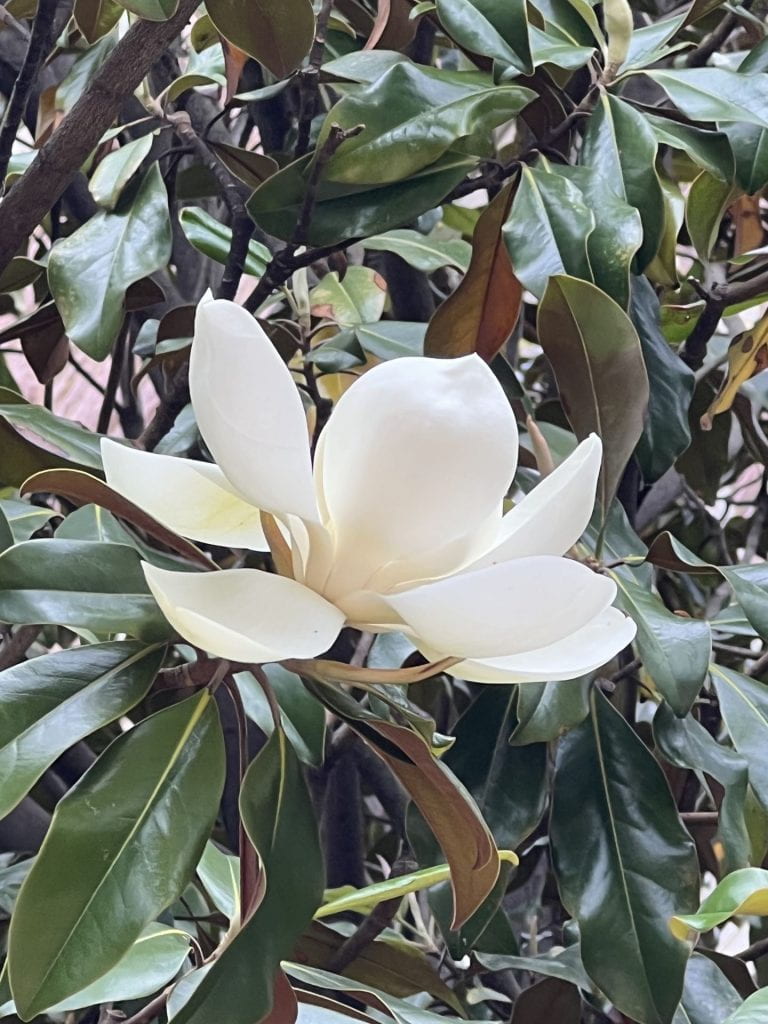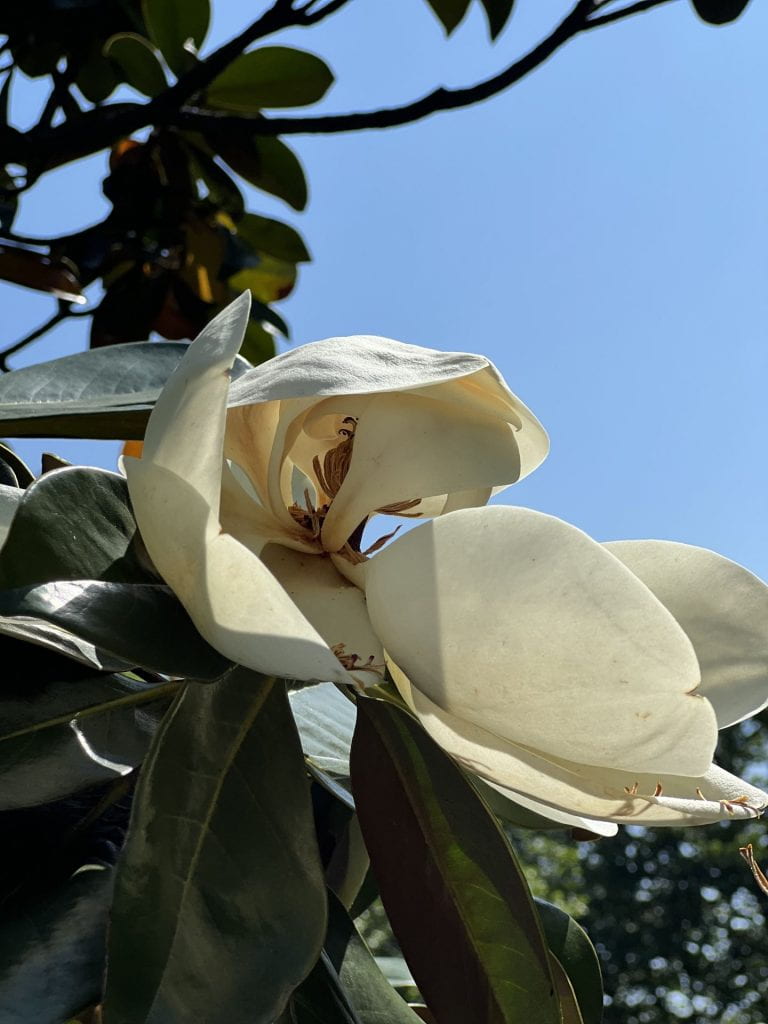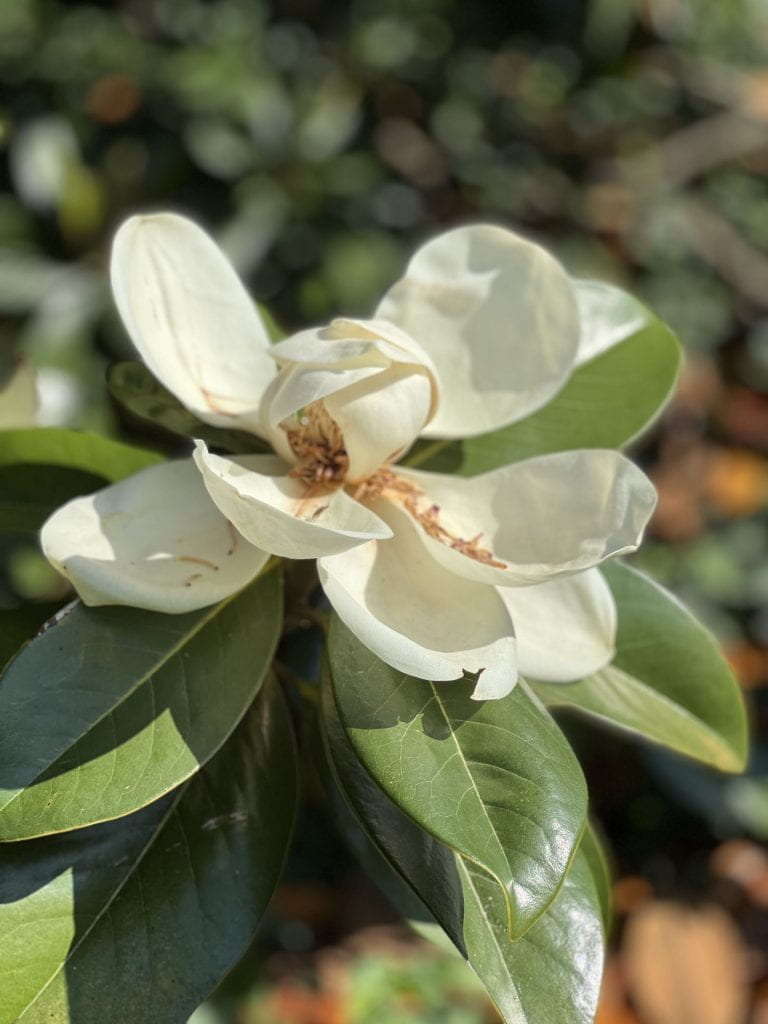Southern Magnolia
Arbor Walk #63, TreeKeeper ID #4685
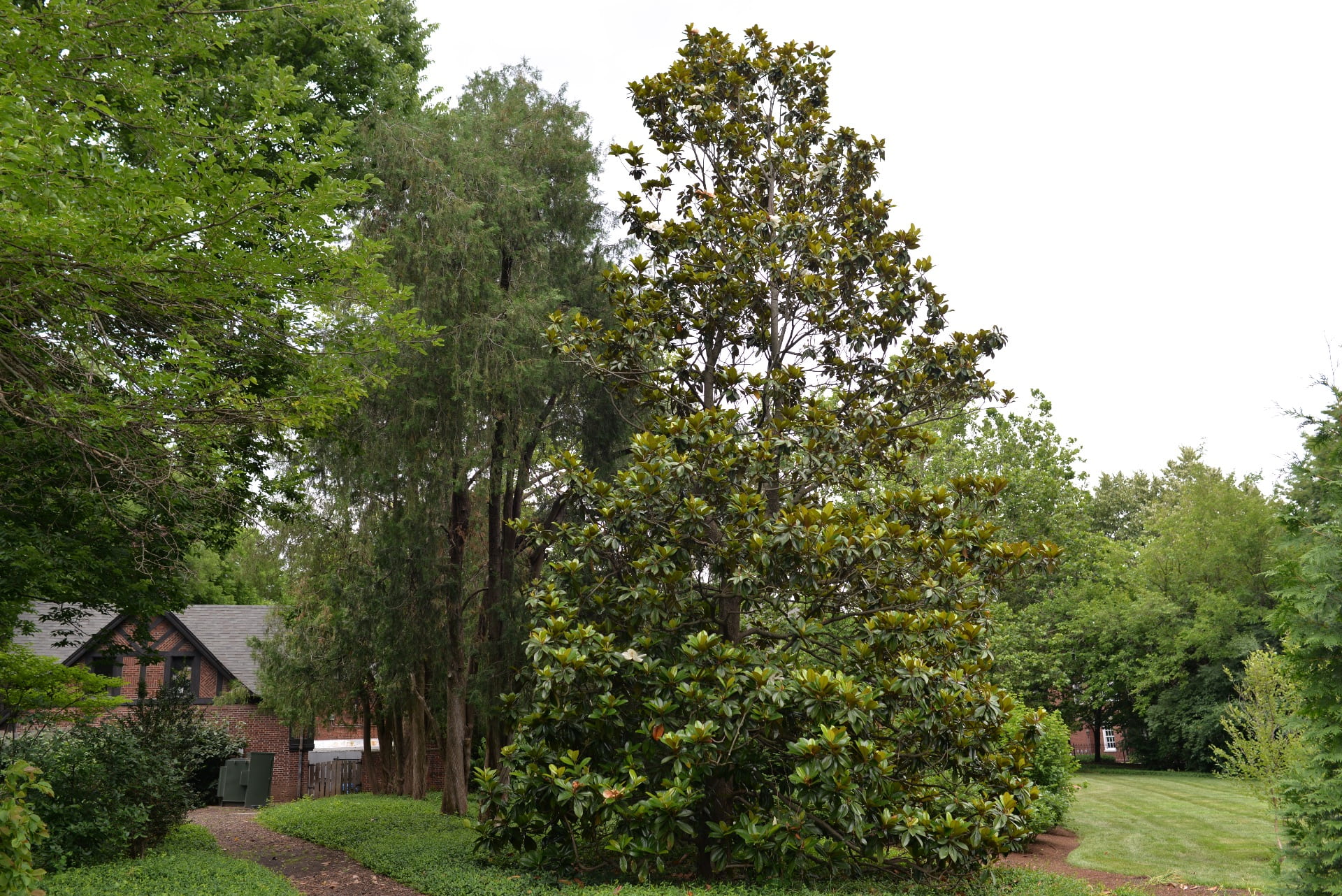
The Southern Magnolia, known for its fragrant late-springtime flowers, is one of the most characteristic native trees of the American South. With a typical native range incorporating moist woodland areas from North Carolina to Florida to Texas, St. Louis is much farther north than where Southern Magnolias usually grow. Unlike the ‘Brown Beauty’ Southern Magnolia cultivar near Mudd Field, the non-cultivar version is generally ill-suited to St. Louis winters, and this specimen has survived primarily because it is in a relatively sheltered location. The tree’s most distinctive feature is its leaves—glossy dark green on top and a soft pale green below. While typically considered to be (broadleaf) evergreen, it may become partially deciduous in harsh winters.
More information on the Southern Magnolias in our Arboretum here!

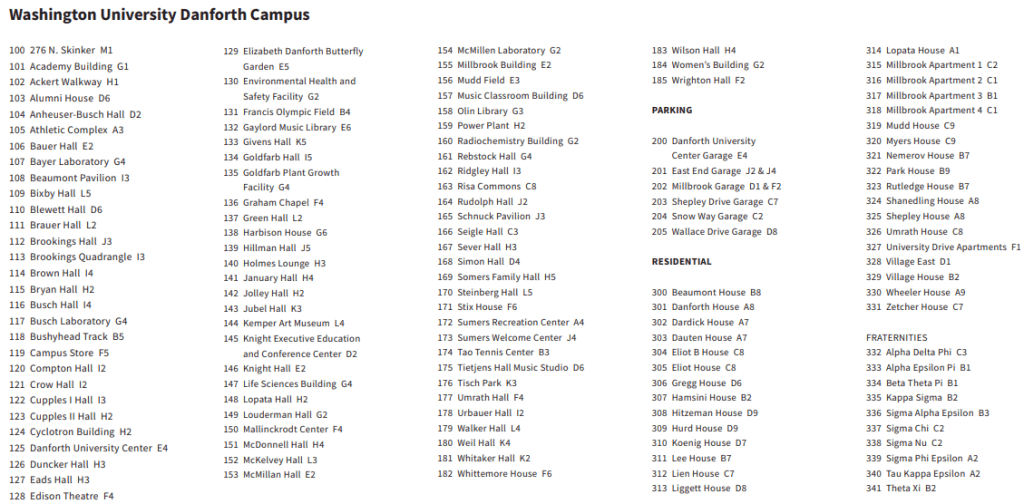
GPS Coordinates
N/A
Percent Concrete
N/A
Distance to Buildings
| Year | Close Building #1 | Close Building #2 | Close Building #3 |
|---|---|---|---|
| 2020 | Whittemore House, 29.42 m | 6465 Ellenwood Ave., 31.61 m | Stix International House, 57.82 m |
Distance to Other Species
| Year | Close Species #1 | Close Species # 2 | Close Species # 3 |
|---|---|---|---|
| 2020 | American Arborvitae, 6.92 m | American Arborvitae, 8.01 m | American Arborvitae, 9.82 m |
Standard Measurements
| Year | Height (m) | DBH (cm) | Caliper (m) | Crown Diameter N-S (m) | Crown Diameter E-W (m) | Average Crown Diameter (m) |
|---|---|---|---|---|---|---|
| 2020 | N/A | N/A | N/A | 5.72 | 6.32 | 6.02 |
| 2023 | 16.88 | 40 | N/A | 6.69 | 7.43 | 7.06 |
Nests and Pests
| Year | Description |
|---|---|
| 2020 | Grey+Green lichen 1 borehole Unique brown fungal growths which appear in small patches with light and dark brown rings Twig/branch blight. Some instances also appeared to have fungus Downy mildew Fungal leaf spot |
Leaf Identification
The Southern Magnolia has simple (no leaflets), alternately arranged, unlobed leaves. They are up to 10″ in length, a glossy green above, and a rusty green and pubescent below. The leaves feel comparable to leather.
Twig and Bud Identification
The twig is reddish-tan and hairy. It may have circular rings denoting previous years’ growths. It will give off a scent when snapped. The axillary leaf buds are cylindrical, hairy, and light green-brown. The flower bud is terminal and very large; it is almond-shaped and has long, silky orange hairs.
Bark Identification
While the bark is dotted with warty lenticels (pores) when young, it will develop gray plates as it matures.
Fruit Identification
The fruit is an a cluster of hairy, brown, teardrop-shaped capsules that form a cone-like structure. The capsules will open to release cherry-red individual seeds. Before ripening, each capsule is green and has a stiff bristle at its tip.
Flower Identification
The flowers of the Southern Magnolia will reach 6″-12″ when in bloom, and are white with an intense floral fragrance. The tepals (inclusive of both petals and sepals) form a bowl around the stamens and pistils and will peel back as the bloom fades. The flowers bloom in late spring.
‘Bracken’s Brown Beauty’ Identification
This cultivar generally is a smaller, more winter-durable version of the wild-type Southern Magnolia. The leaves, flowers, and fruit are all smaller in this cultivar, and the tree shape is closer to pyramidal.
Magnolia ID Tips
- The Southern Magnolia is distinctive among magnolias for its dark, glossy, leathery leaves.
- It is also the tallest tree of the major native magnolias.
- The only magnolia to have a larger flower than the Southern Magnolia is the Bigleaf Magnolia; however, the Bigleaf Magnolia flowers have purple markings on the inside of the interior tepals, while the Southern Magnolia sepals are completely white.
